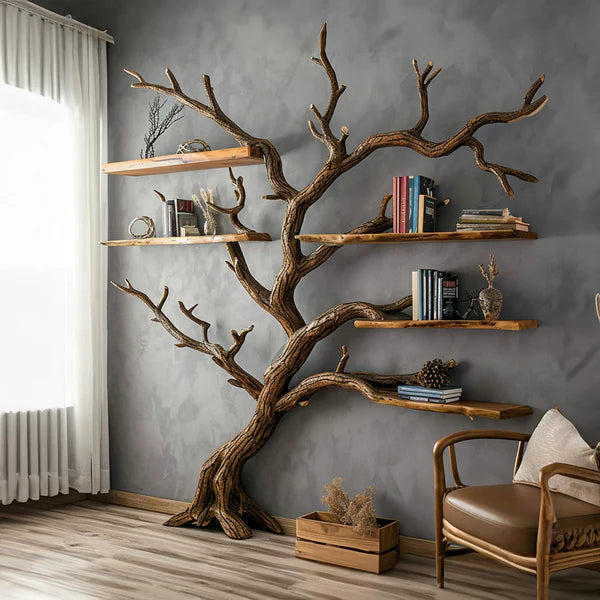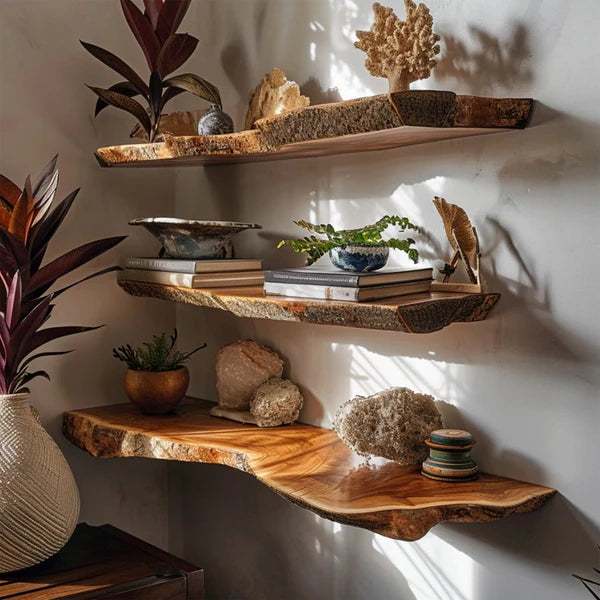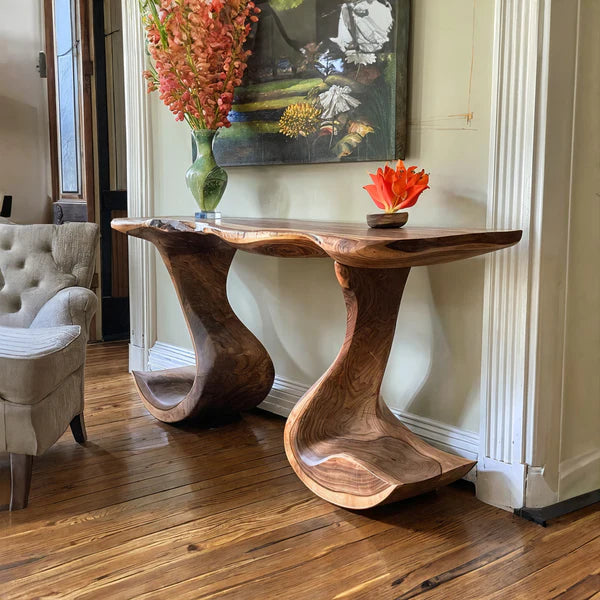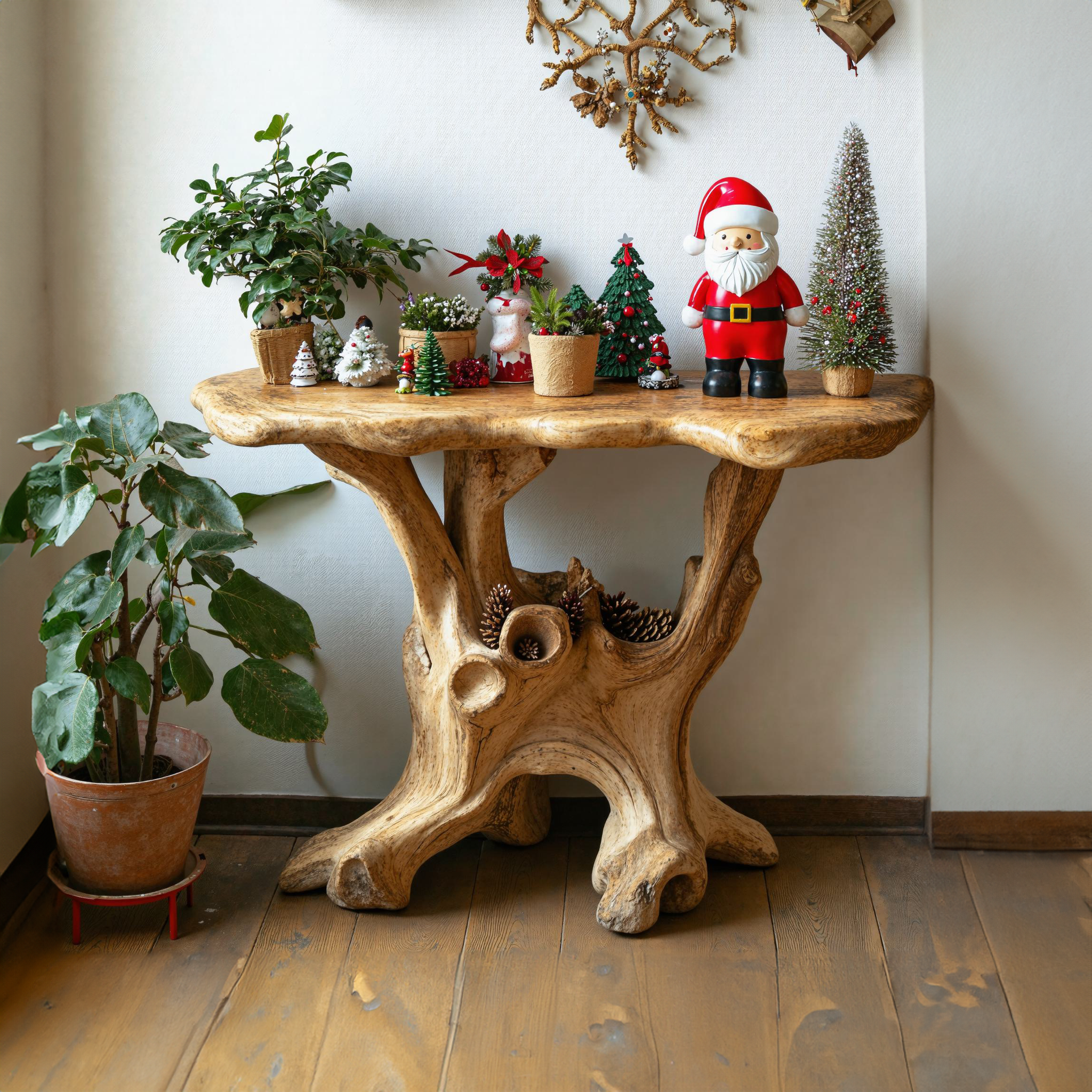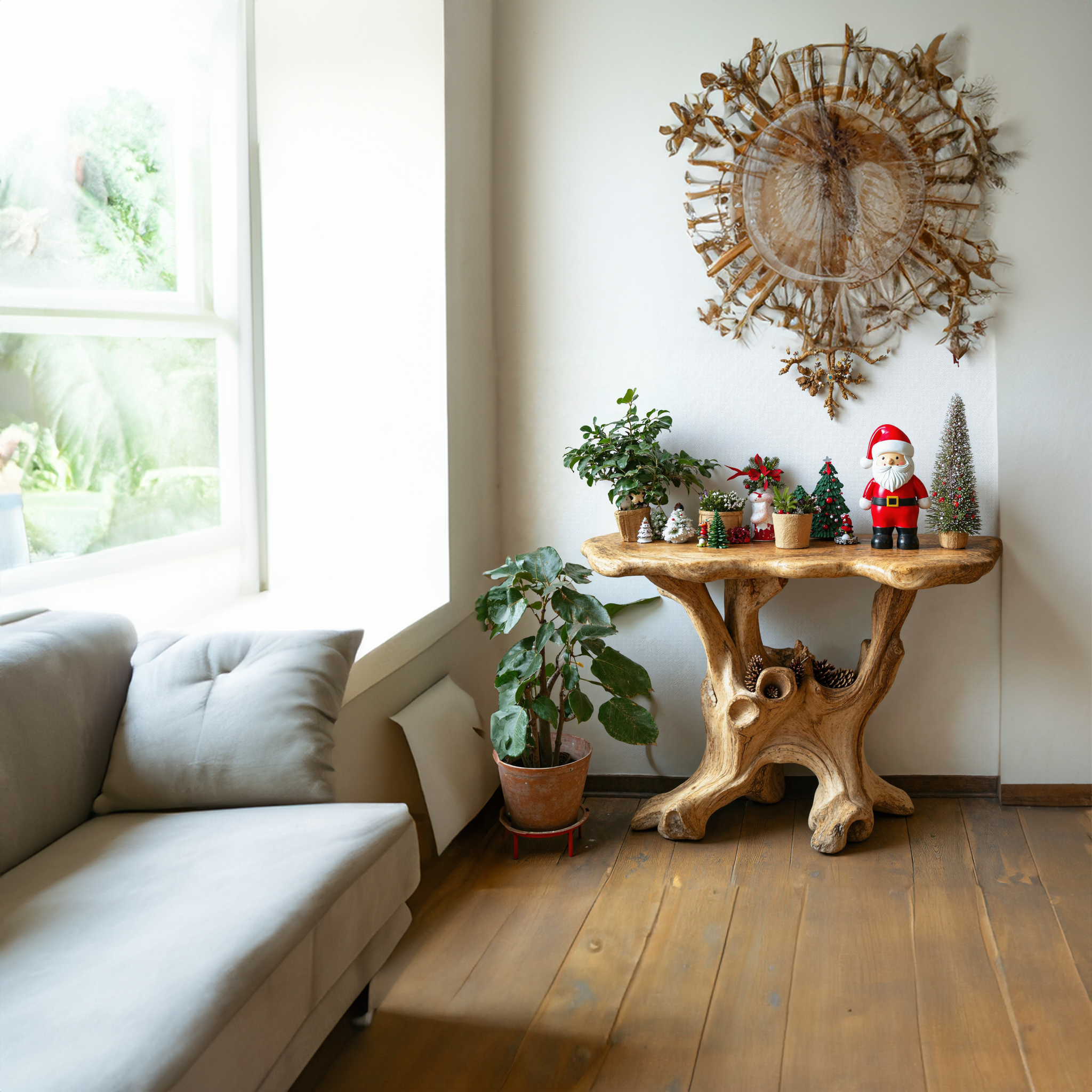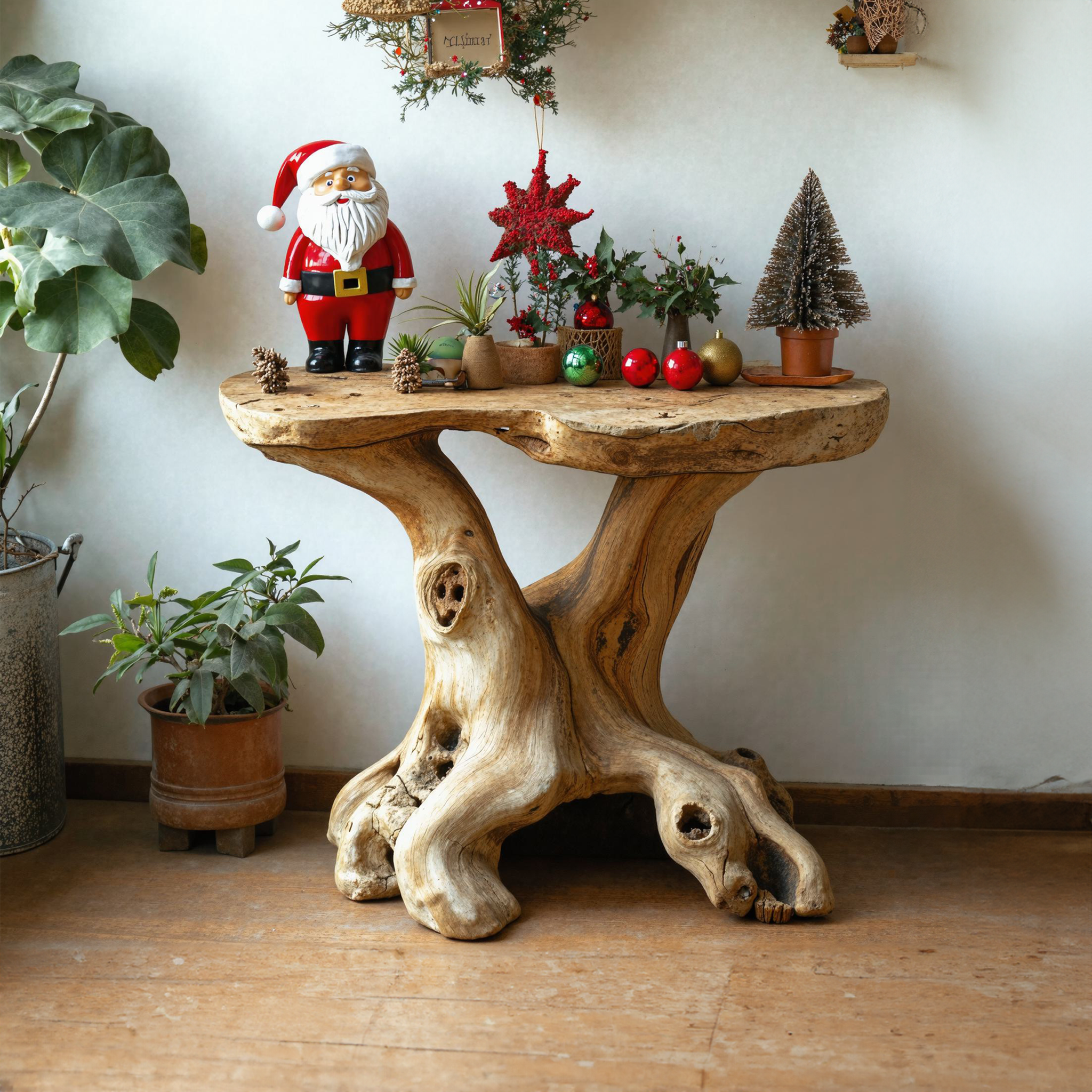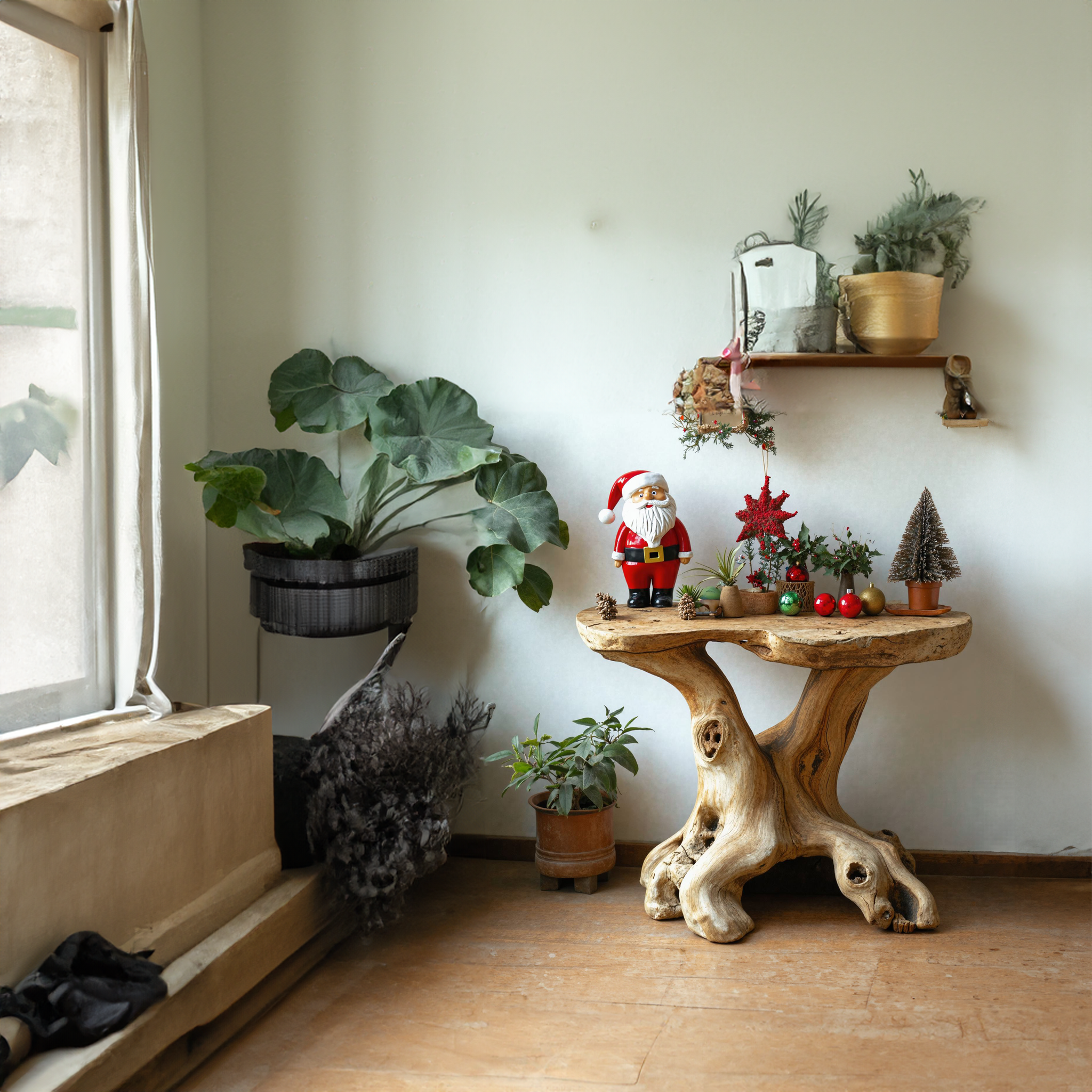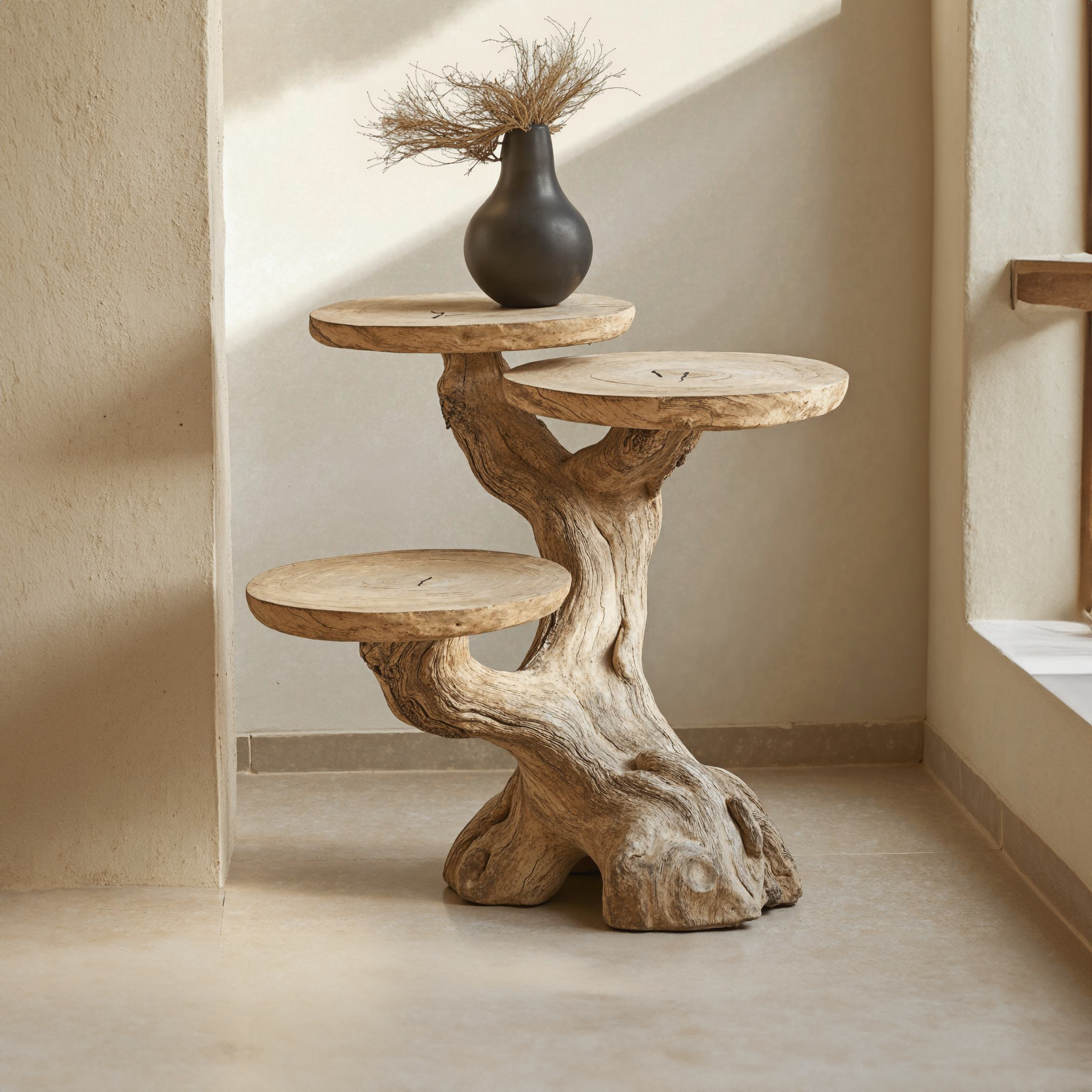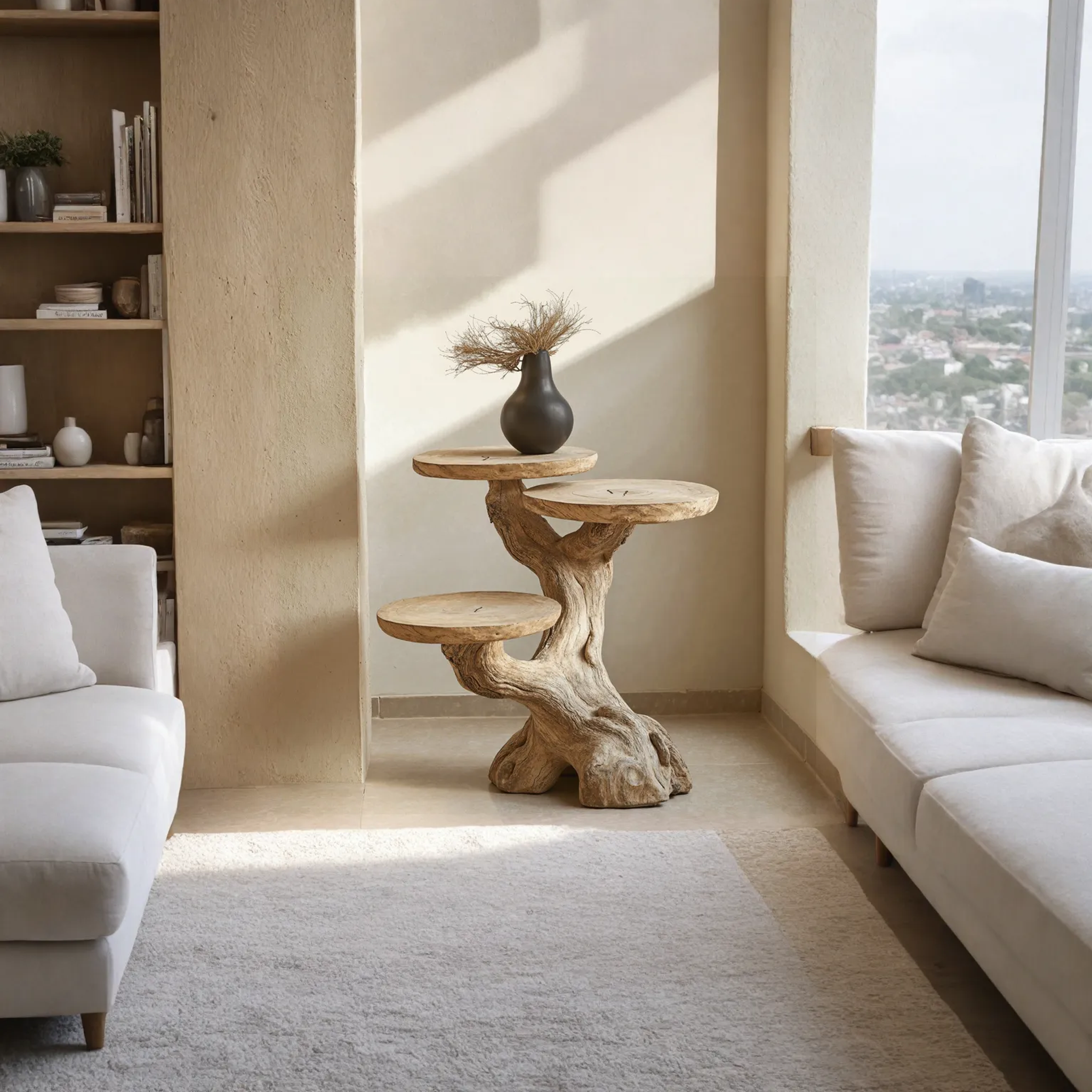An end table is a small, versatile piece of furniture typically placed next to a sofa, armchair, or bed, serving as a convenient surface for items that need to be within easy reach. Functioning as both a practical and decorative element, end tables offer an ideal spot for essentials like lamps, books, beverages, and personal items. With their compact design, they’re adaptable to nearly any room size and can be tailored to suit a variety of home styles, from modern to rustic. Beyond their practicality, end tables enhance a room's visual appeal, often chosen to harmonize with other furniture pieces like coffee tables and console tables, bringing a well-rounded and cohesive look to the living area.
1. Purpose and Versatility of End Tables
End tables excel in versatility. In a living room, they complement seating areas by providing accessible space for necessities while allowing homeowners to display decorative accents. The size and height of end tables make them ideal for holding small lamps, allowing for ambient lighting that enhances a cozy atmosphere. In a bedroom, end tables serve as nightstands, accommodating items like alarm clocks, phones, and reading materials, which adds functionality without overwhelming the space.

Additionally, end tables can transform entryways, filling empty corners and complementing other furniture like console tables, which are often used for storage or display purposes in larger spaces. When placed strategically, end tables enhance both functionality and aesthetics, adding layers to a room’s design.
2. Styles and Materials of End Tables
End tables come in various styles and materials, catering to different interior design themes:
- Wooden End Tables: Known for their classic appeal, wooden end tables offer durability and a warm, natural aesthetic. Solid wood options like oak, walnut, and cherry bring richness and texture, making them a timeless choice for traditional or rustic interiors.
- Glass and Metal End Tables: For a more modern, sleek look, glass and metal end tables offer sophistication. Often seen in contemporary spaces, these tables reflect light, adding brightness to the room. The mix of glass and metal creates a minimalist design that complements modern decor.

- Stone or Marble End Tables: Stone-topped end tables, especially those with marble finishes, add a luxurious feel to a space. Their unique patterns and textures bring visual interest, and they often serve as statement pieces in rooms where elegance is emphasized.
- Storage and Shelving Options: Some end tables come with built-in storage options, such as drawers or open shelves, adding functionality. These are ideal for smaller rooms or apartments, where maximizing storage without sacrificing style is essential.
3. Choosing the Right End Table for Your Space
Selecting the right end table requires consideration of both form and function. Here are some factors to keep in mind:
- Size and Proportion: When choosing an end table, consider the height of the surrounding furniture, like sofas or armchairs. Ideally, the height of the end table should align with the arm of the sofa for easy access. The size should also be proportionate to other items in the room, ensuring balance without overcrowding.
- Shape and Style: End tables come in various shapes—round, square, rectangular, or even abstract forms. The shape you choose can impact the flow of the room. For instance, round end tables soften a space, while square or rectangular tables lend structure and symmetry.
- Functionality and Storage Needs: Determine how you’ll use the end table. If you need extra storage, consider end tables with drawers or lower shelves. For a minimalist look, a simple table with a sleek top might suffice.

4. End Tables and Complementary Furniture
While end tables play a distinct role, they also harmonize with other pieces, enhancing the overall design. In living rooms, they often accompany coffee tables to create a functional and visually balanced setup. Coffee tables provide a larger surface in the center of the seating area, while end tables add support on the sides, offering additional surfaces for personal items or decorative accents.

In entryways or hallways, console tables often stand as focal points, providing storage or display space along the walls. End tables can complement these setups, especially in larger spaces, by filling in corners or acting as decorative accents. Their small size allows for flexibility, and they can be moved or rearranged as needed to fit the design layout.
5. Contact informations
Contact SpryInterior now to experience great service and own unique Bathroom Vanities.
Email: support@spryinterior.com
Office Address: 50 Williamson Road, Bergenfield, NJ 07621, United States
Support Hours: Monday to Friday, 10:00 AM to 8:00 PM (EST)


